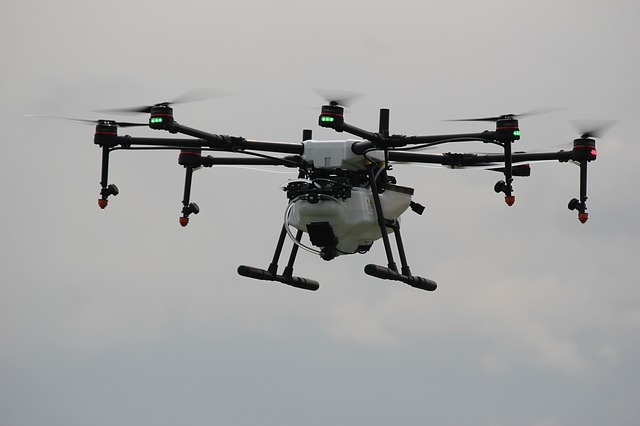Producing more, better, with lower costs and in a sustainable way has always been a challenge for agribusiness. But with advances in technology, especially the Internet of Things, we can see the application of IoT in agriculture and its numerous facilities.
In this sense, agricultural work has been equipped with tools and transformative techniques, especially digital ones. All this is part of the 4th Industrial Revolution — essential to achieving Agriculture 4.0.
Want to understand more about it? Understand how The Anatel Certification works and continue following the following article!
What does IoT mean in agriculture?
Every day that passes, we see the emergence of more "things" capable of connecting to the Internet —machines, cities, cars, homes, appliances and others.
Through this connection, these objects receive, share, and analyze information. From this, they can receive guidance, draw actions and make decisions. That's IoT.
However, although we see these transformations in our daily life, advances do not seem to reach the agricultural environment at the same speed. Some factors contribute to this, such as the territorial extension of Brazil, which hinders its wide propagation.
Fortunately, a new generation of farmers and agronomists, open to agitech, are working to democratize concepts and ideals that, until recently, were not part of agronomist reality.
What is smart farming?
We call smart agriculture agricultural work based on IoT technologies. In a statement, it consists of a system with state-of-the-art technology, which allows the cultivation of insumin a sustainable way.
With the implementation of IoT in agriculture, processes are managed more effectively in the field. With the aid of sensors, for example, it is possible to monitor soil quality, humidity, temperature, automate the irrigation process, and others.
In this way, farmers are able to monitor crop conditions remotely, and better manage natural resources. Therefore, smart agriculture is much more effective than traditional agriculture.
5 Advantages of IoT in Agriculture

As we have explained above, farmers will only have to gain from the Internet of Things. Even though most of them don't know their applications yet, connected devices have revolutionized agricultural processes. Here are the key benefits.
1. Intelligent data collection
Sensors installed on IoT devices are able to collect a large volume of useful information for farmers. As we mentioned below, some examples are climatic conditions, soil quality and plantation progress.
Such data can be used to monitor the status of the farm, as well as the performance of workers and the efficiency of the appliances.
2. Waste reduction
With greater production control, IoT in agriculture facilitates cost-efficient management. From smart devices, producers can more accurately identify any anomaly in the crop, for example.
Consequently, it is easier to effectively prevent any infestation that will harm yields.
In addition, one can also save in the process of irrigation and fertilization. After all, there are sensors installed in the agricultural machinery, which can generate a lot of information about the soil.
Another advantage is the possibility of programming the sensors to notify about the ideal harvest time. In this way, waste is avoided in the crop.
3. Process automation
From smart devices, it is also possible to automate several stages of the production process, such as irrigation, fertilization or pest control.
By getting rid of these manual interventions, you get higher accuracy, better product quality and save resources. Thus, agriculture ensures higher standards of quality in the harvest.
4. Animal monitoring
With IoT, farmers can monitor the health of farm animals closely, even if they are physically distant. Thus, one can reduce the search time of cows and sheep in the pasture, for example, if they are part of the herd.
It is also possible to monitor the pregnancy of these animals and identify which of them are sick. If so, the sensor sends a notification to the producer to contact a veterinarian.
5. Competitive advantage
One more benefit is increased harvest —as we mentioned in the above topics—that yields a competitive advantage in business. To exemplify, we can mention preventive maintenance.
Once sensors are installed on a tractor, for example, the collected data can quickly notify whenever any technical failure arises.
5 IoT applications in agriculture

In addition to the benefits, the Internet of Things can be applied in a number of ways in the agricultural sector, positively resulting in productivity and business return. Check out what they are below.
1. IoT agriculture sensors
We have already shown above the impacts of IoT sensors on agriculture. When installed in agricultural equipment, it enables efficient control of production, while saving resources.
2. Demand for irrigation
Water is an indispensable element for agricultural crops. However, when over-applied, planting performance is impaired. Therefore, it has become a necessity to find out which points need more water or not.
In this sense, IoT devices are responsible for monitoring soil quality and triggering the irrigation system whenever necessary.
3. Soil correction
As with water control, the same devices can be used to measure pH levels and other soil nutrients. From this, they are able to identify the points that need correction — fertilization, cathe, etc.
4. Crop diagnosis
Use of drones in the agricultural environment provided numerous facilities and solutions. Because they are integrated into the Internet and have sensors, GPS and other attributes, it democratized information collection and made decision making more effective.
Thus, making an accurate diagnosis of crop health has become less laborious. As the producer no longer needs to travel miles for this, drones have generated a great saving of time and resources.
5. Smart greenhouses
The conditions of luminosity, humidity and temperature should be highly controlled in greenhouses. Typically, this control happens manually, through covers, sperse, and other measures.
With IoT devices, you can unify each greenhouse environment with a single system. Thus, making this control became less complicated and more agile.
Conclusion
IoT in agriculture only tends to evolve. As you can see, the benefits and facilities generated for producers allowed work in the field to be done more efficiently, quickly and with less resource expense.Did you like this content? So, learn more about Anatel Certification and find out what are the steps to get it!
